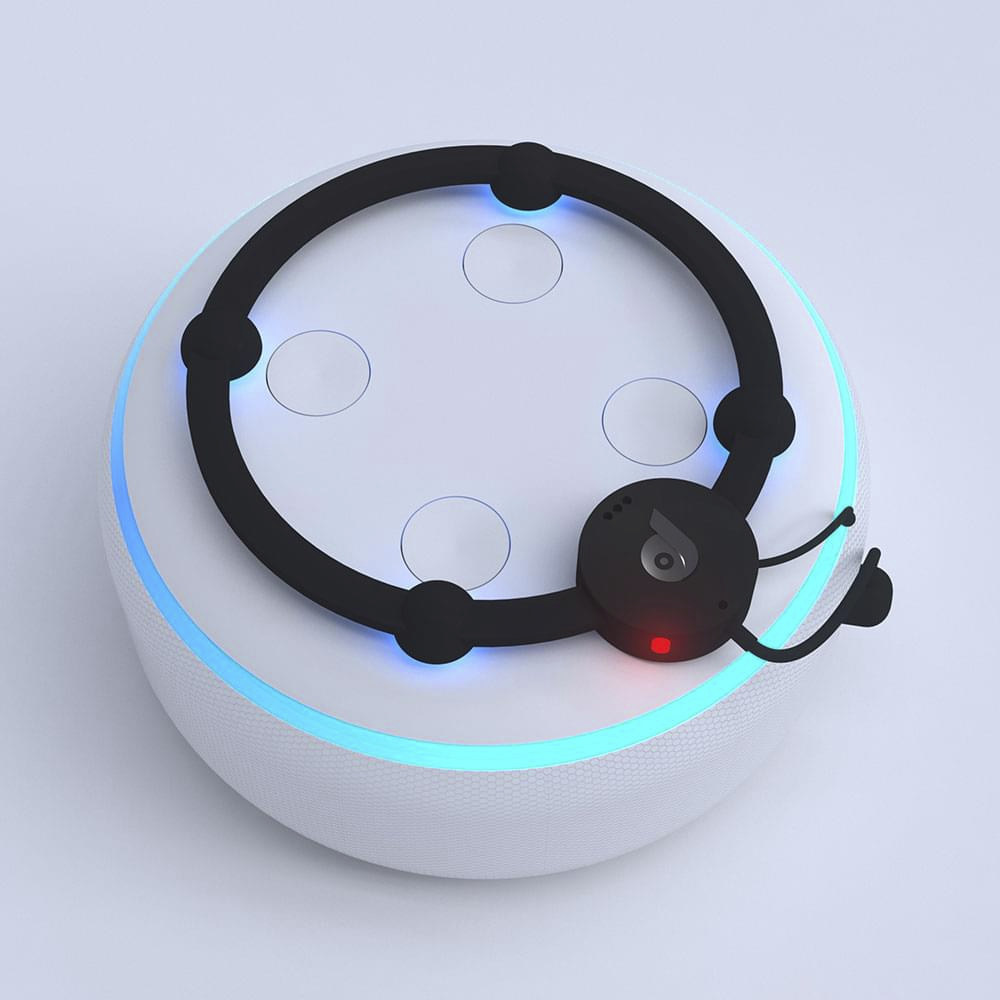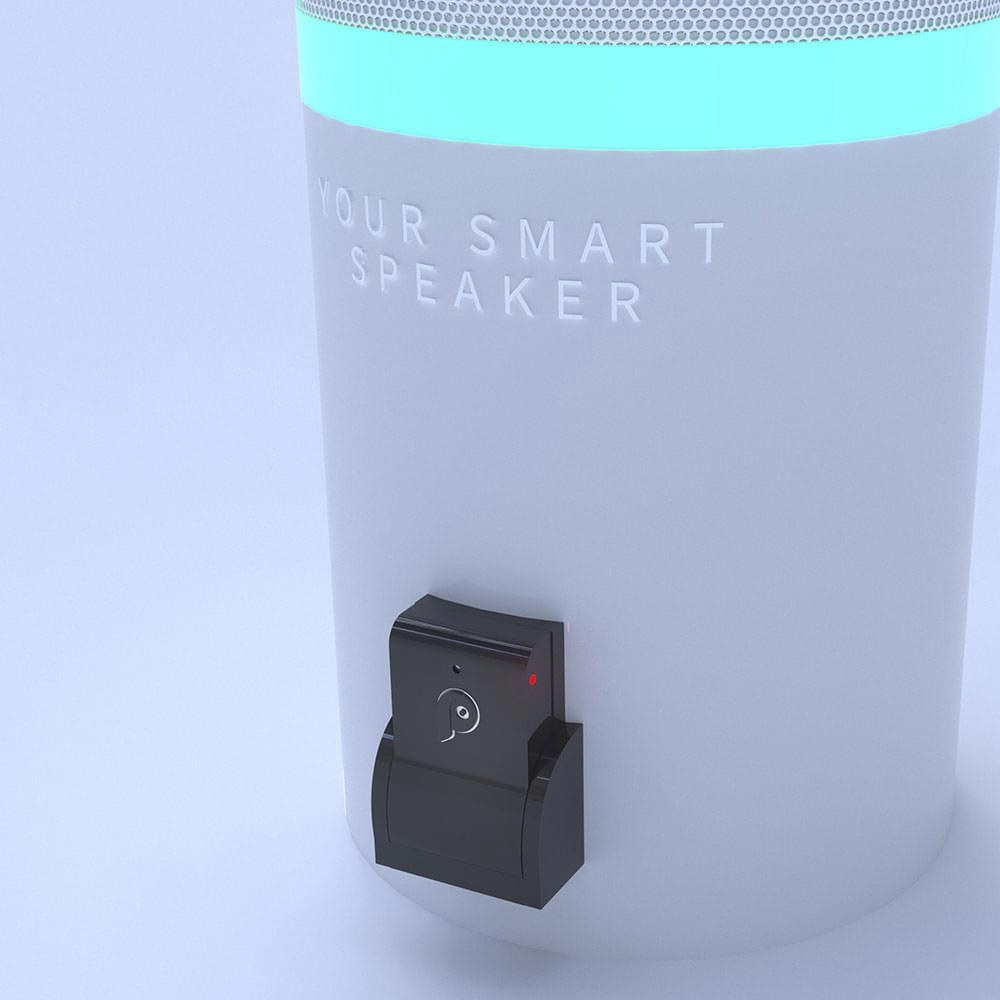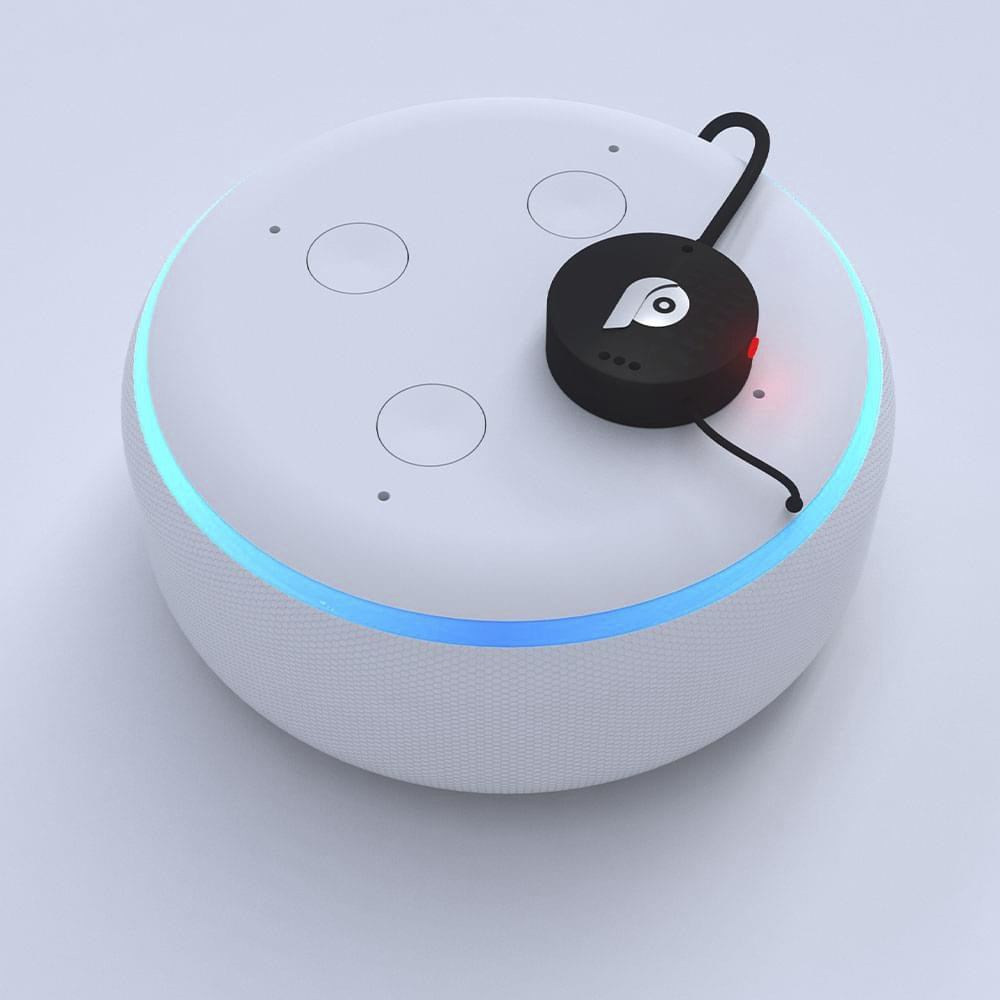Smart speakers normally work by constantly listening to a wake-word, that is processed locally, before listening to your more complex command, and send the audio to the cloud for processing. That means most of the time no data is sent to the cloud, as continuously processing audio in the cloud would not be resource-efficient.
However, in isolated cases, the company may want to listen to audio samples to improve their product(s) and it’s possible since the hardware is perfectly capable of doing this. Alternatively, hackers could always access your smart speaker. So if you worry about your privacy, while still wanting the convenience of using a smart speaker, a third-party solution controlling the microphone should protect your privacy.
Pleasant Solutions “Paranoid” aims to provide such privacy solution by taking control of the microphone on your smart speaker. Due to the various smart speaker designs and features in the market, three options are provided using “Paranoid” wake word:
-
Home Button (Pictured above) – USB-powered button-pusher that physically pushes a smart speaker’s mute button, and then re-engages it after you have finished your voice command. Only works with smart speakers with a physical mute button and no mute on/off audio output (e.g. “mute has been turned on/off” each time) such as Amazon Echo and Echo Dot.
-
Home Wave (pictured below) – This version generates noise and interference – inaudible to humans – in close proximity to the smart speaker to jam its microphones until Paranoid device detects the wake word. That’s the best solution when no mute button is available. The company mentions Google Home and Google Home Mini as supported devices.
-
Home Max – That’s the safest option, but you need to send your smart speaker to the company for them to physically cut the microphone and bypass the signal to go through the Paranoid circuitry. Once the hardware modification is done, the company will send the device back to you.

Google Home smart speaker comes with a mute button though. So why use Paranoid then? If the mute is enabled, you’d need to physically set the switch to off to use Google Home again, while with Paranoid this is not needed.
You may wary about trusting Pleasant Solutions, but it should not be an issue, as Paranoid does not have any WiFI not Bluetooth connectivity, and no way to access the Internet.
Some other features of Paranoid Home devices:
- At the push of the physical button, Paranoid Home will say what percent of the time it has blocked eavesdropping. For example, “99.2% of listening was blocked this week”.
- A little LED light turns on anytime Paranoid Home is allowing the smart speaker to listen.
- Conversation mode is supported.
- Paranoid Home not only listens for the “Paranoid” wake word, but it also watches the behavior of the smart speaker and cuts off listening if the smart speaker does not indicate to the user that it is listening (for example, with the smart speaker lights).

Paranoid Home device has launched in the US and Canada, and international sales are expected later this year.
MSRP is $49 for all three versions, but the company is now taking orders for $39 on its website.

Jean-Luc started CNX Software in 2010 as a part-time endeavor, before quitting his job as a software engineering manager, and starting to write daily news, and reviews full time later in 2011.
Support CNX Software! Donate via cryptocurrencies, become a Patron on Patreon, or purchase goods on Amazon or Aliexpress. We also use affiliate links in articles to earn commissions if you make a purchase after clicking on those links.





I don’t have this problem with my “smart speaker” because I don’t have one.
Problem solved — total cost — zero.
I’m waiting for someone to offer a privacy respecting version that is smart enough to recognize it’s wake word locally — without recording everything I say on the server of some company that specializes in privacy invasion. But I’m not holding my breath as I wait.
As explained in the introduction, that’s how smart speakers already work. They recognize the wake-word locally, and only send audio after detection. That does not mean companies may from time to time do some “testing” and listen to people conversation.
https://www.nbcnews.com/tech/innovation/alexa-privacy-fail-highlights-risks-smart-speakers-n877671
I read the news too, I actually spent my days reading news. Amazon Echo does not continuously listen to your speech, unless it’s hacked or Amazon does some testing. The infrastructure costs would simply be too high.
Would you like to see some legal cases where audio was obtained?
I’m sure they delete old audio over time for cost reason. But it’s been legally proven that they have the capability and do record and save it for some period of time. And the individual paid for the communication infrastructure they used to do it.
What’s recorded to the cloud is whatever is said after an Alexa request made intentionally or unintentionally (e.g. people are talking about a person called Alexa, or the smart speaker mistakenly understand another word as Alexa).
Please feel free to link directly to court documents, but please no link to news website, because I’ve noticed many don’t know what they are talking about.
You are aware that this is a “news website”, right? At least that’s what it says at the top of the page.
Or just don’t buy it in the first place.